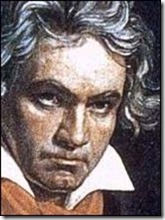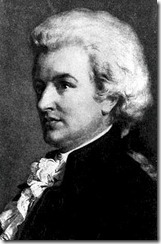When I was in graduate school in the early eighties, I became fascinated by the idea of “writing process,” which is the approach you take toward your writing.
In a writing theory class I read a paper by a professor of rhetoric, Lillian Bridwell (now Bridwell-Bowles), who posited that there are two types of writers: Beethovian and Mozartean.
Ludwig von Beethoven Wolfgang Amadeus Mozart
The Beethovians, like Beethoven himself, write very rough drafts and spend a lot of time revising. The Mozarteans produce a nearly perfect first draft the first time they write—similar to the way the great composer worked. The theory is that the Mozarteans are PLANNERS, who do most of their revising in their heads before they put anything on paper. The Beethovians need to go through all those planning steps on paper—writing as they go to DISCOVER what they have.
Anyone who has read my posts on my own writing process (e.g., Thurber’s Mud) will see that I am a Beethovian writer. A good friend of mine, a very successful children’s novelist, is the opposite: a nearly pure Mozartean. He doesn’t even revise his manuscripts—just checks them for typos.
These writing types lie on a spectrum, of course: Nobody is 100% either type. Some current theorists think your type may be inborn, and that it is apparently indicative of other cognitive processes. When I began work on the third novel in the Pandora’s series, I thought I’d be able to do it in a linear fashion, especially since I already had around 100 pages written.
Nope. Not a chance. The deeper I get into the novel, the more I think of things that should go earlier—or later—and things that I need to research. As I explained in last week’s post I’m already doing major edits on the electronic version, and the small tablet I was using for notes has evolved into three separate tablets, each filled with scribbles and post-its.
Bridwell’s early research showed that it is more difficult for a Beethovian to write on a computer than for a Mozartean. This is because we Beethovians need to take our time, and also take space, spreading things out to look at the work holistically.
Neither writing process is right, or better than the other. They both just are. Which are you? I will probably have more to say on this topic in future posts.





